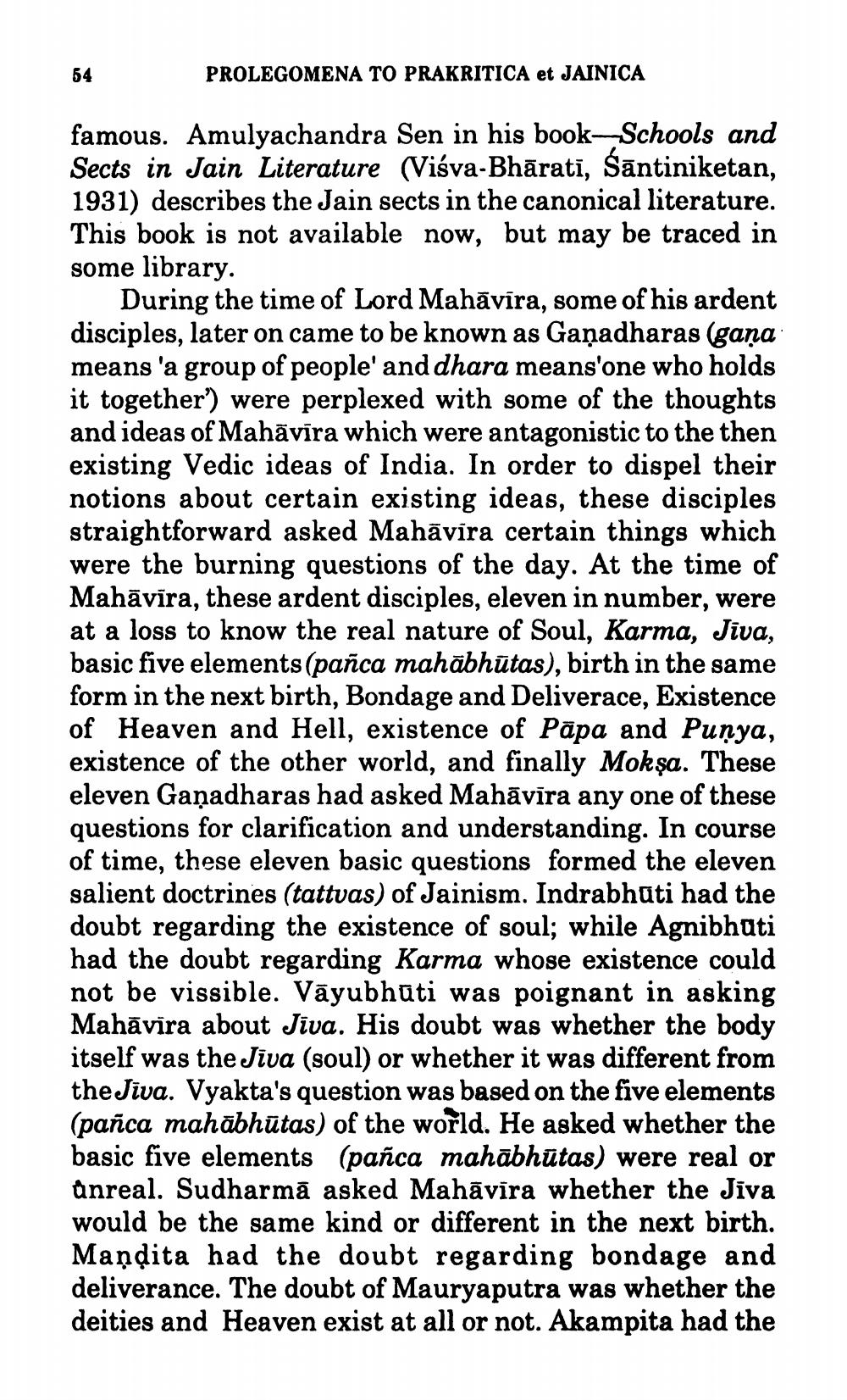________________
64
PROLEGOMENA TO PRAKRITICA et JAINICA
famous. Amulyachandra Sen in his book-Schools and Sects in Jain Literature (Viśva-Bhāratī, śāntiniketan, 1931) describes the Jain sects in the canonical literature. This book is not available now, but may be traced in some library.
During the time of Lord Mahāvīra, some of his ardent disciples, later on came to be known as Gañadharas (gana means 'a group of people' and dhara means'one who holds it together') were perplexed with some of the thoughts and ideas of Mahāvīra which were antagonistic to the then existing Vedic ideas of India. In order to dispel their notions about certain existing ideas, these disciples straightforward asked Mahāvīra certain things which were the burning questions of the day. At the time of Mahāvīra, these ardent disciples, eleven in number, were at a loss to know the real nature of Soul, Karma, Jiva, basic five elements (pañca mahābhūtas), birth in the same form in the next birth, Bondage and Deliverace, Existence of Heaven and Hell, existence of Pāpa and Punya, existence of the other world, and finally Mokşa. These eleven Gañadharas had asked Mahāvīra any one of these questions for clarification and understanding. In course of time, these eleven basic questions formed the eleven salient doctrines (tattvas) of Jainism. Indrabhuti had the doubt regarding the existence of soul; while Agnibhuti had the doubt regarding Karma whose existence could not be vissible. Vāyubhūti was poignant in asking Mahāvīra about Jiva. His doubt was whether the body itself was the Jiva (soul) or whether it was different from the Jiva. Vyakta's question was based on the five elements (pañca mahābhūtas) of the world. He asked whether the basic five elements (pañca mahābhūtas) were real or anreal. Sudharmā asked Mahāvīra whether the Jiva would be the same kind or different in the next birth. Mandita had the doubt regarding bondage and deliverance. The doubt of Mauryaputra was whether the deities and Heaven exist at all or not. Akampita had the




